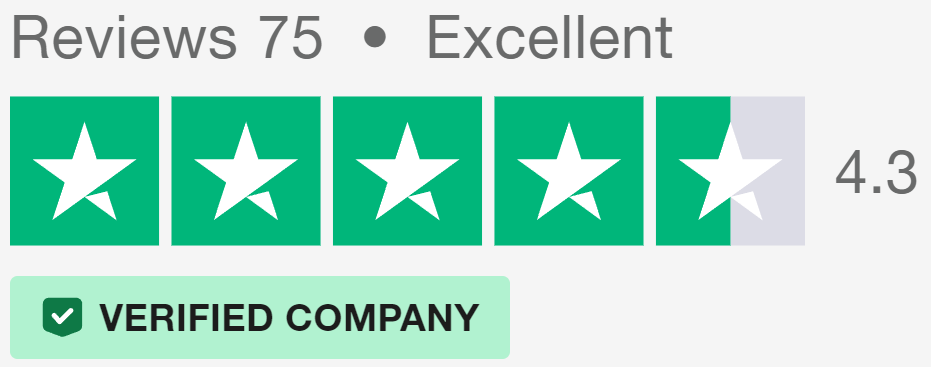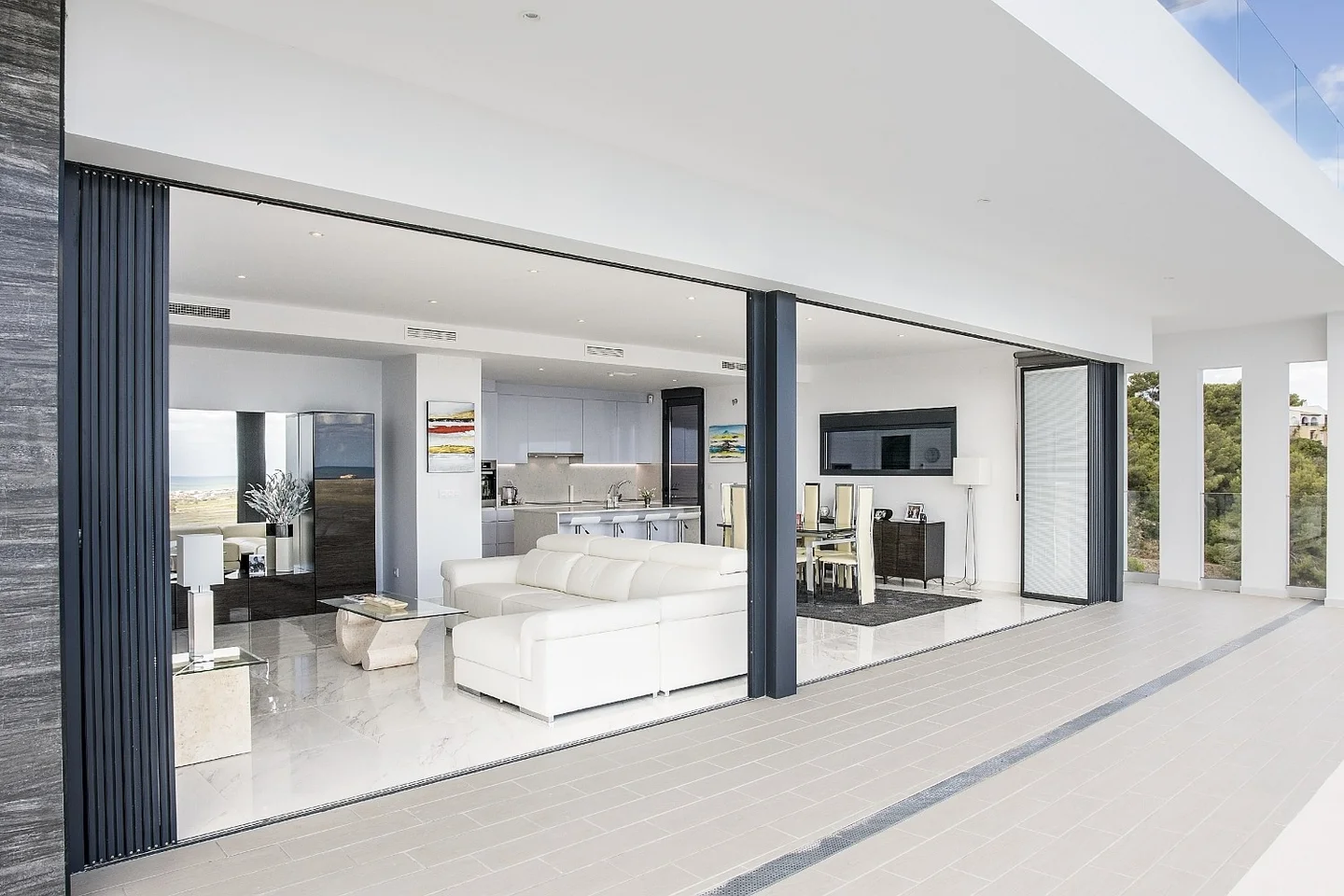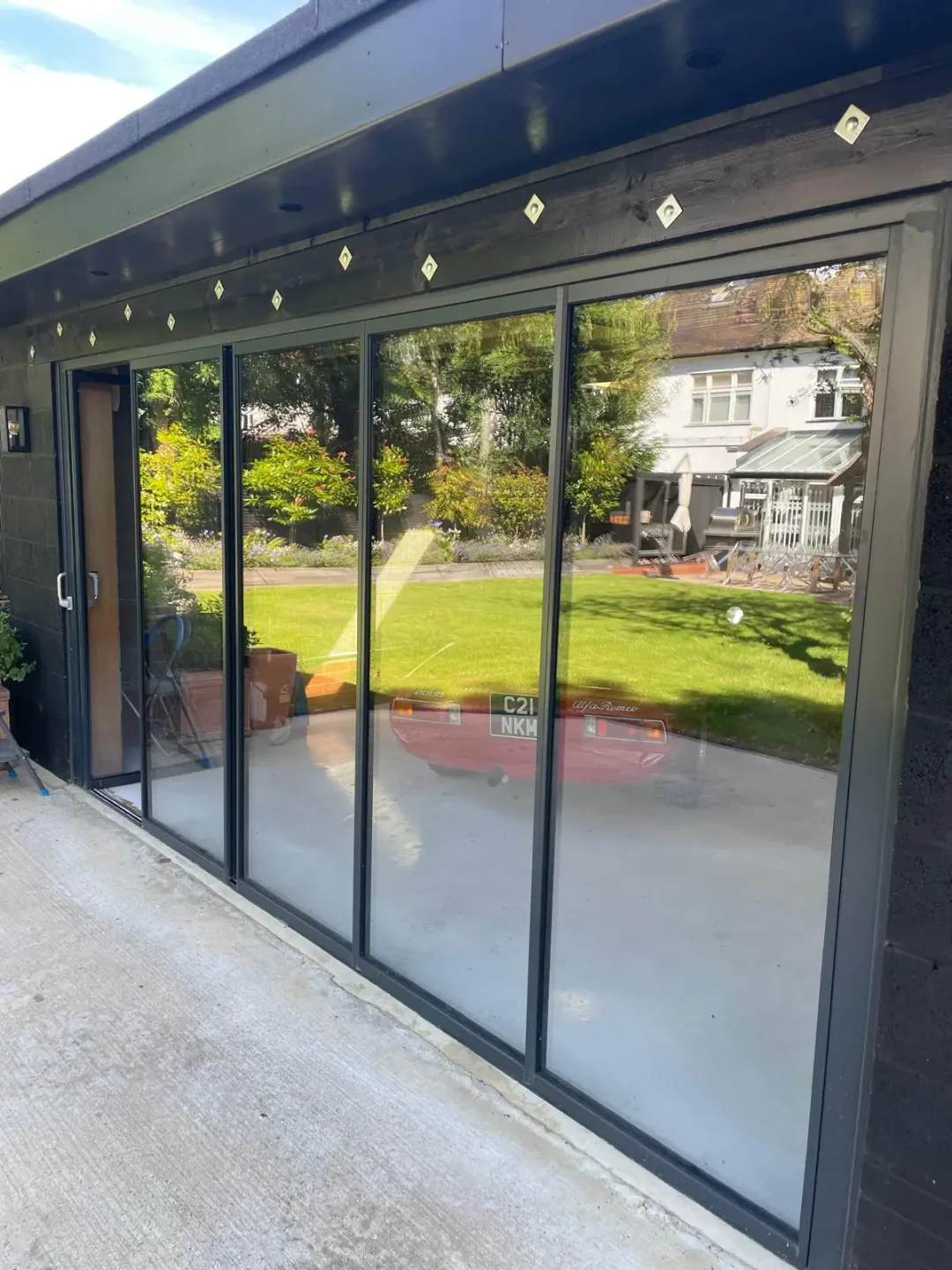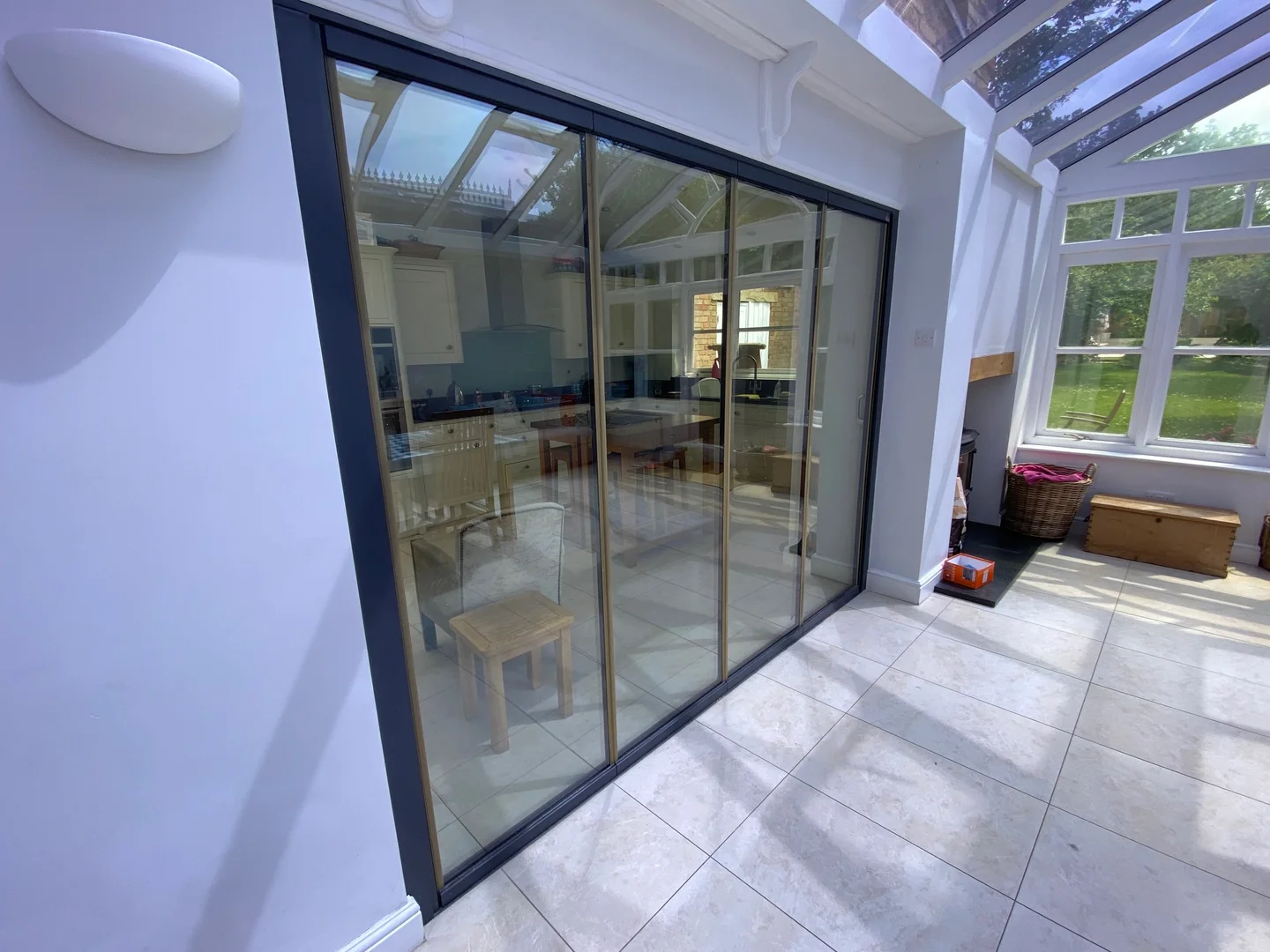Shopping for Aluminium Bifold Doors: Buyer’s Guide
Table of Contents

Introduction to Bifold Doors and Aluminium
Modern aluminium bifold doors, also known as concertina doors, fold back against themselves in a neat stack, creating wide, unobstructed openings. The popularity of aluminium bifold doors continues to grow as manufacturers develop increasingly sophisticated systems.

How Bifold Doors Work
The operating mechanism of aluminium bifold doors relies on a track system fixed at the top and bottom of the frame. Special wheels and guides allow the door panels to glide smoothly along these tracks, folding neatly to one or both sides when opened. When choosing aluminium bifold doors, understanding this mechanical system helps homeowners make informed decisions about configuration options. The number of panels can range from two to eight, with each panel typically measuring between around 400mm and 1200mm wide. A master door often operates as a standard access door for daily use, while the full system can be opened when needed. Quality aluminium bifold doors feature precision-engineered running gear that ensures reliable operation throughout the seasons.
Common Frame Materials
British homeowners can choose from several materials when buying bi folding doors. While timber offers traditional charm and uPVC provides cost-effective options, aluminium door frames stand out for their combination of strength and style. The market for aluminium bifold doors has grown substantially as more people recognise their practical advantages. Steel provides another metal option, though its weight and cost often make it less practical for residential installations. Composite frames, which combine multiple materials, aim to blend the benefits of different options but often can’t match the performance of aluminium bifold doors in terms of durability and maintenance requirements. Each material brings its own set of characteristics to door construction, with modern aluminium alloys offering an impressive balance of qualities.
Why Aluminium?
Raw aluminium undergoes extensive processing to become suitable for door construction. The metal’s natural properties make it ideal for bifold systems – it’s lightweight yet remarkably strong, allowing for slim frames that support large glass panels. Modern aluminium bifold doors showcase the material’s versatility through various design possibilities. Through a process called powder coating, manufacturers can apply durable colours directly to aluminium bifolds, creating a finish that resists scratches and weathering. The material’s stability means it won’t warp or expand in changing temperatures, unlike some alternatives. Well-built aluminium bifold doors maintain their smooth operation regardless of seasonal weather changes.
The Science Behind the Metal
Modern aluminium alloys used in door construction contain small amounts of other metals like magnesium and silicon, improving their structural properties. These alloys undergo thermal breaking – a process where a polyamide barrier is inserted between the inner and outer sections of the frame. This barrier blocks heat transfer while maintaining the frame’s structural integrity, addressing one of the historical drawbacks of metal frames in residential buildings. The scientific principles behind modern aluminium alloys ensure that today’s aluminium bifold doors combine robust construction with excellent thermal performance. Research in metallurgy continues to improve the properties of aluminium door systems, with manufacturers regularly updating their designs to incorporate new advances in material science.
Why Choose Aluminium for Your Bifold Doors?
Building regulations and energy costs rank high on homeowners’ priority lists when selecting new doors. Aluminium bifold doors offer impressive thermal efficiency alongside robust security features. Modern manufacturing techniques have helped create slimline aluminium bifold doors that look stylish while meeting strict building standards.
Strength and Slim Frames
The inherent strength of aluminium allows manufacturers to create bi fold patio doors with remarkably thin profiles. Where other materials need bulky outer frame sections for stability, aluminium can support large glass panels with minimal visible framework. The structural integrity of aluminium bifold doors means they can span wider openings without compromising security or operation. These thinner frames let in more natural light while providing unobstructed views of the outside. Garden room bifold doors, for example, particularly benefit from aluminium’s strength, as these spaces often feature extensive glazing to create bright, usable rooms throughout the year.

Energy Performance
Modern aluminium bifold doors include advanced thermal break technology that prevents heat escaping through the frame. This technical innovation helps keep homes warm in winter and cool in summer, making these doors energy efficient throughout the year. The high-quality seals and multi-point locking systems on aluminium bi fold doors work together to eliminate draughts. Proper installation combined with double or triple glazing reduces heat loss substantially, helping control energy bills in all seasons. Many homeowners find that upgrading to modern aluminium systems improves their home’s overall thermal performance.
Environmental Impact
The production of aluminium doors requires less raw material than other options due to the metal’s strength-to-weight ratio. Once installed, aluminium bifold doors can last for decades with minimal maintenance requirements. The recyclability of aluminium makes it an eco-friendly choice – most aluminium bi folding doors contain a high percentage of recycled material. The manufacturing process has improved over the years to reduce waste and energy consumption. Long-term durability means fewer replacements are needed over time, reducing the overall environmental impact of home improvements.
Built to Last
Quality aluminium bi folding doors can withstand decades of daily use without warping or discolouring. The powder-coated finish maintains its appearance even in coastal areas where salt spray can damage other materials. Large bifold doors made from aluminium resist twisting and bending, ensuring smooth operation year after year. Unlike timber, which needs regular maintenance to prevent rot, or uPVC that can become brittle over time, aluminium stays strong and stable throughout its lifetime. Professional installers often recommend aluminium for its reliability in British weather conditions.
Common Concerns About Aluminium Bifold Doors
Many people worry about potential drawbacks when investing in new doors for their home. While aluminium bifold doors cost more upfront than some alternatives, they often prove more economical over time. Modern aluminium folding doors have overcome many of the limitations that affected older metal door systems.

Cold Spots and Heat Loss
Older metal bifold door systems earned a reputation for poor thermal performance. Modern external bi folding doors incorporate innovative thermal break technology that prevents cold from travelling through the frame. The myth that all metal doors create cold spots stems from outdated designs that lacked proper insulation. Current aluminium patio doors match or surpass the thermal efficiency of other frame materials thanks to advanced engineering and materials. The combination of thermal breaks and high-quality weather seals keeps indoor temperatures stable regardless of external conditions.
The Truth About Cost
Quality bi-fold doors represent a substantial investment in your property. The initial price of aluminium bifold doors typically exceeds that of uPVC alternatives, reflecting the superior materials and engineering involved.
However, when factoring in longevity and reduced maintenance needs, the overall cost becomes more competitive. Most homeowners find the durability of aluminium door systems offsets the higher purchase price, as they rarely need replacing and maintain their appearance for decades. Premium materials and precision engineering contribute to the cost, but also ensure reliable operation throughout the system’s lifetime.
Maintenance
Maintaining aluminium folding doors requires minimal effort compared to other materials. Unlike timber, which needs regular painting or staining, powder-coated aluminium needs only basic cleaning to stay looking fresh. The robust nature of bifold glass doors made from aluminium means they resist scratches and dents that could affect softer materials. Regular cleaning with soapy water and occasional lubrication of the running gear keeps these systems working smoothly. The powder-coated finish proves particularly durable in British weather, maintaining its appearance without fading or peeling.
Noise and Movement
Some people worry that metal doors might be noisy or prone to expansion in changing temperatures. High-quality bifold door systems feature specially designed rollers and guides that ensure quiet operation. Aluminium’s stability means it expands and contracts less than many other materials as temperatures change. Modern engineering has eliminated the rattling and sticking that sometimes plagued older metal door designs. The precision-made components in today’s aluminium bi fold doors work together to provide smooth, reliable movement in all weather conditions.
Technical Features and Options with Aluminium Bifold Doors
Quality aluminium bifold doors combine robust security with practical features that improve daily life. The best systems balance safety features with smooth operation and thermal performance. Modern aluminium bi folding doors include numerous technical improvements that make them reliable and secure.
Security Standards
Professional-grade aluminium bifolding doors must meet strict security requirements to achieve PAS 24 certification. This standard tests the doors’ resistance to common burglary methods, including manipulation of the locking mechanisms and physical attacks. Top-quality bifold aluminium doors use multi-point locking systems that secure the panels at several points along the frame. Advanced cylinder locks resist picking and drilling, while toughened safety glass adds another layer of protection. The strength of aluminium helps these external doors withstand attempted break-ins better than many alternative materials. Security hinges prevent panels from being lifted off their tracks, even when the doors are partially open. Modern aluminium bifold doors often incorporate additional anti-snap cylinder locks and internal beading that keeps glass panes secure from the outside.
Threshold Options
Low threshold options create step-free access between indoor and outdoor spaces, particularly useful for dining space areas that open onto patios or gardens. Manufacturers offer various threshold depths and styles to suit different installations. Weather-rated aluminium bifold doors can include rebated thresholds that provide extra protection against wind and rain.
Glass Choices
Modern aluminium bi folding doors accommodate various glazing options to match specific requirements. Double glazing comes as standard in most installations for external use, providing good thermal insulation and noise reduction. The space between glass panes can include special gases that improve thermal performance, while low-emissivity coatings help retain heat. Triple glazing offers superior insulation, making it popular for aluminium bifold doors in exposed locations or north-facing walls. Interior bifold glass doors might use different glass specifications, focusing on safety and sound insulation rather than thermal performance. Special solar control glass can reduce overheating in spaces with large glazed areas, while acoustic glass helps create quieter indoor environments.

Hardware Quality
The moving parts in aluminium bi fold doors need careful specification to ensure long-term reliability. Top-hanging systems distribute weight more effectively than bottom-rolling alternatives, reducing wear on the running gear. Quality runners use precision-engineered stainless steel components that resist corrosion and maintain smooth operation. The choice of handles affects both security and usability – magnetic catches help hold doors in position when open, while ergonomic lever handles make daily operation easier. Additional features like child-safety catches and intermediate handles on wider panels improve practicality. Aluminium bifold doors rely on high-grade hinges and rollers that can support substantial weight while allowing easy movement. Load-bearing components undergo extensive testing to ensure they maintain performance over thousands of operations. Well-designed hardware allows for simple adjustment as buildings settle or seasonal changes affect opening sizes.
Performance Testing
Premium aluminium bi folding doors undergo rigorous testing beyond basic safety requirements. Wind load resistance testing ensures panels remain stable in strong gusts, while water tightness tests check seals under pressure. Air permeability ratings indicate how well the system prevents drafts, particularly important for aluminium bifolding doors installed in exposed locations. These tests help verify that doors will perform reliably in real-world conditions.
Choosing Your Aluminium Bifold Doors
Choosing the right style for aluminium bifold doors involves balancing practical needs with visual appeal. The finish and configuration of your doors can improve both the inside and outside appearance of your home. Modern aluminium bi folding doors offer numerous design options that work well with various architectural styles.
Colour Selection
Popular colours for aluminium bifold doors range from classic white to contemporary anthracite grey. The powder coating process allows for precise colour matching, helping doors coordinate with existing windows or architectural features. High-quality aluminium bi fold doors maintain their colour without fading, even in areas exposed to strong sunlight. RAL colours provide consistent options across different manufacturers, making it easier to match future additions or replacements. Dark shades like grey and black can make garden views more prominent by reducing the visual impact of the frames. Some homeowners opt for dual colour finishes, with different shades inside and out to suit both interior and exterior schemes.
Frame Styles
Modern manufacturing techniques allow aluminium bi folding doors to feature exceptionally slim sight lines. The strength of aluminium means 4 panel bifold doors can use narrower frames than other materials while maintaining structural integrity. Contemporary designs often reduce the amount of visible framework to create clean, straight lines that suit modern architecture. Traditional-style aluminium doors can include decorative panels or glazing bars that mirror period features. The configuration of panels affects both practicality and appearance – odd numbers often work better as they allow for a lead door that can be used independently.
Extra Features
Many aluminium bi fold doors now incorporate innovative design elements that add style and practicality. Integral blinds, fitted between the glass panes, offer privacy without compromising the clean lines of triple glazed units. Manufacturers can add horizontal bars or grid patterns to match architectural features like crittall windows. Special glass coatings can reduce glare while maintaining clarity, particularly useful in south-facing installations. Flush track systems help create visual continuity between indoor and outdoor flooring materials.

Matching Your Property
The design flexibility of aluminium bi folding doors allows them to complement various building styles. Period properties often benefit from heritage-style frames that incorporate traditional details while offering modern performance. Contemporary homes can showcase minimal frames with large glass panels, creating striking architectural features. The configuration of aluminium bifold doors – whether they stack to one side or split in the middle – should reflect how you plan to use the space. Panel sizes and proportions need careful planning to ensure they look balanced within the overall building design.
Natural light patterns change how aluminium bi fold doors look throughout the day. Frame colours appear different under various light conditions, making sample viewing important during the selection process. The orientation of your property affects which finishes work best – darker frames can help reduce glare in bright south-facing locations. Premium aluminium bifold doors with proper glazing help maintain consistent light levels while preventing uncomfortable heat build-up in sunny rooms.
Frequently Asked Questions
Which is better - aluminium or uPVC bifold doors?
Both materials have their merits, but aluminium typically offers better strength and durability. While uPVC costs less initially, it can warp or discolour over time and requires thicker frames to maintain structural integrity. Premium aluminium frames last longer, need less maintenance, and allow for slimmer frames that let in more light.
What is PAS 24 certification?
PAS 24 is a British security standard that tests how well aluminium bifold doors resist forced entry. The certification process includes various attack methods like manual manipulation, tool attacks, and physical force. Only doors that pass these rigorous tests can display the PAS 24 mark, giving homeowners confidence in their security features.
Are aluminium bifold doors energy efficient?
Modern aluminium bifold doors with thermal breaks match or exceed the insulation properties of other frame materials. The polyamide barrier between inner and outer frame sections stops heat escaping, while high-quality seals and multi-point locking systems prevent draughts. Quality double or triple glazing combined with proper installation helps keep energy bills down.
What is a thermal break in aluminium doors?
A thermal break creates a barrier between the interior and exterior parts of the door frame using a non-conductive material, typically polyamide. This clever bit of engineering prevents cold from travelling through the metal frame while maintaining structural strength. This technology has made modern aluminium frames as thermally efficient as other materials, addressing one of the main drawbacks of older metal door systems. The width and design of the thermal break affect its performance, with premium systems using wider breaks for better insulation.
Do aluminium bifold doors conduct cold?
Modern aluminium bifold doors don’t conduct cold thanks to thermal break technology. The polyamide barrier effectively stops the transfer of cold from outside to inside, preventing the condensation and cold spots that plagued older metal doors. Quality systems perform as well as or better than other frame materials in British weather conditions.
Can you paint aluminium bifold doors?
While it’s technically possible to paint aluminium frames, it’s not recommended as it may void the warranty and won’t last as long as the original powder coating. The factory-applied powder coating creates an extremely durable finish that resists scratching, fading, and peeling. If you want to change the colour, it’s better to have the doors professionally re-powder coated.
Can you have different colours inside and out?
Yes, many manufacturers offer dual-colour options for aluminium bifold doors, letting you choose different finishes for interior and exterior surfaces. This flexibility helps coordinate with both internal decoration and external features without compromise. The powder coating process ensures both colours maintain their appearance over time.
What's the best configuration for a 4-metre opening?
For a 4-metre opening, aluminium bifold doors typically work best with either four or five panels. A four-panel configuration offers simpler operation and slightly wider glass panels, while five panels provide more flexibility in how the doors stack. The choice often depends on whether you want a master door for daily access and which direction you prefer the doors to stack.
What's the difference between standard and slim frames?
Standard frames typically measure 60mm to 70mm wide, while slim frames can be as narrow as 45mm. The choice between the two affects both aesthetics and performance, with slimmer frames letting in more light but potentially offering slightly less insulation. Premium systems achieve impressive strength even with minimal frame widths, though costs typically increase as frame sizes decrease.
We’d Love to Help You
Vision Glass Doors is a designer, manufacturer, and installer of premium door systems. We are a family run business with over 20 years’ experience and 5,000 installations across the UK.
Our leading range of door systems include Ultra Slim – Slide and Turn Doors, Slimline Sliding Patio Doors and Frameless Glass Doors. Suitable for various internal and external applications, they are applicable to residential and commercial projects.
Click Quick Quote Online for a free quotation within 24 hours. Alternatively, call or email us on 01582 492730 or at info@visionglassdoors.co.uk.

